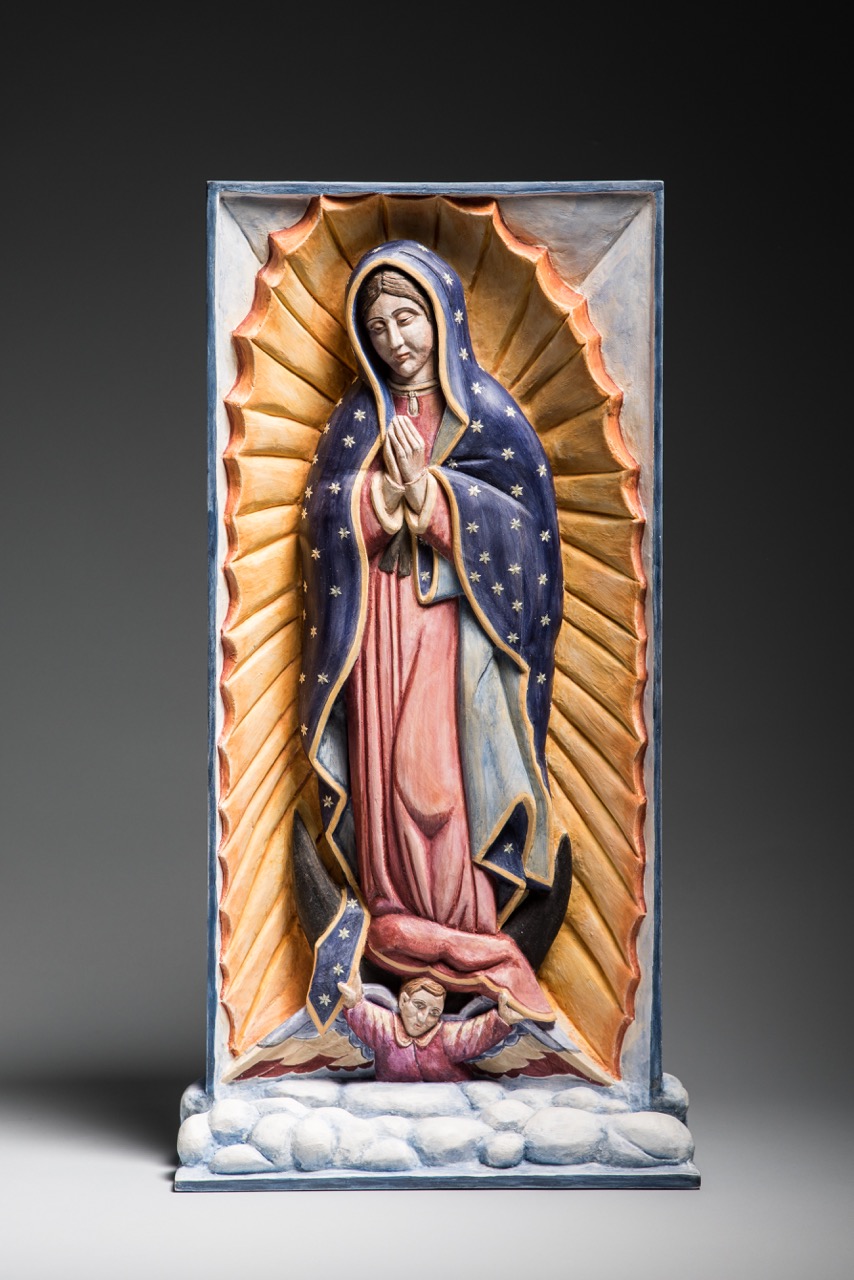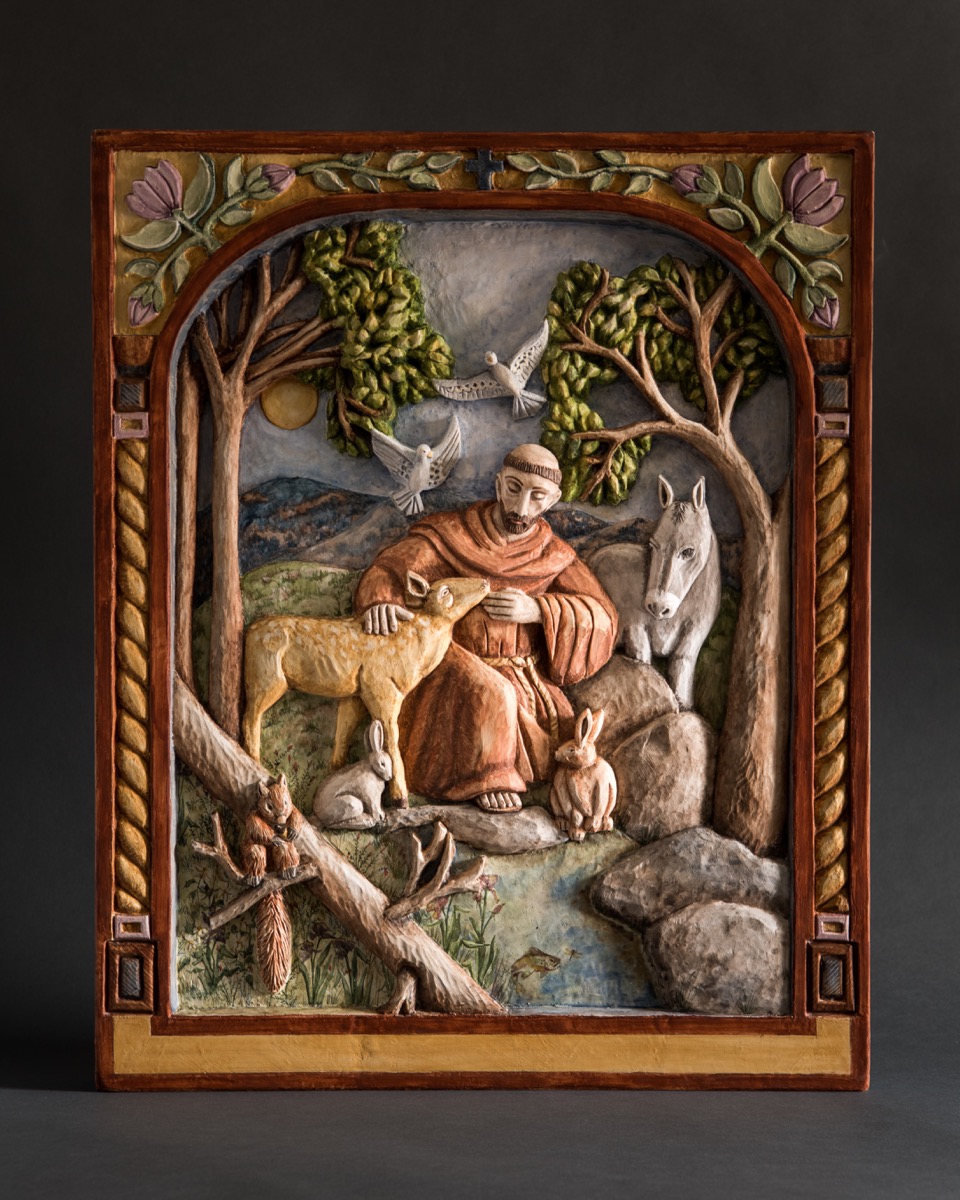JEAN ANAYA MOYA

Though Jean Moya was raised in the village of Galisteo and brought up in the Catholic faith, she was only introduced to Traditional Spanish Colonial Art when she attended her first Spanish Market. Having found the art media that truly excited her passion, she promptly enrolled in a retablo class. She would go on to win first place at the Spanish Market, year after year, and in 2014 would be awarded the Governor’s Award for Excellence in the Arts.
At the International Folk Art Museum, Jean studied straw appliqué with Charlie Sanchez, and soon began.combining retablo techniques with straw and corn husk, manipulating the straw to create movement, depth and perspective. Combining these two art forms, her work becomes both traditional and contemporary. She works with aspen, pine and poplar panels, homemade gesso, natural wheat straw, corn husk, grasses and tree bark, and natural paint pigments and piñon sap varnish. She interlaces such traditional materials with modern ones: acrylic black, dyed straw, commercial glues and varnishes. Like her ancestors, she adapts her work to the changing world.
Jean honors her ancestors and mentors for the knowledge they have instilled in her. She has studied woodworking with award-winning Spanish Colonial furniture craftsman Anthony Martinez, as well as with her husband Steve Moya. And she has studied Spanish Colonial furniture with Matthew Duran and sculpture with Master Santero Felix Lopez, whose mentorship helped her to become a true Santera, creating beautiful Christian images, and honoring her faith and cultural traditions. Jean continues to study carving under the direction of master carver Ivan Dimitrov.
Traditional Hispanic Folk Art, which developed during the Spanish Colonial period, when resources were scarce and Catholic devotion deep, connects Jean to her ancestors and hispanic heritage.


